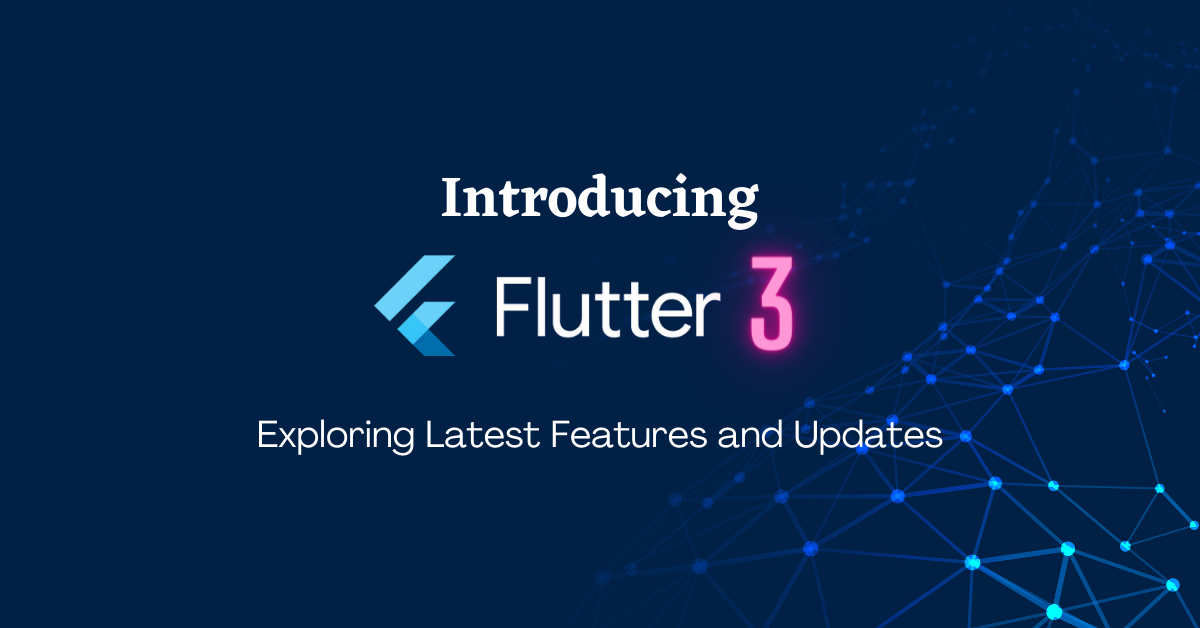Flutter 3 has arrived, and it’s packed with great new features and upgrades that will help you make beautiful apps faster than ever before!
Now that it’s been six months since the launch of Flutter 2, the team at Google has released their newest version of Flutter: Flutter 3. This latest update introduces many new features and enhancements to their cross-platform app development kit. They say developers can start using it immediately to build their apps! Let’s take a look at some of the highlights of Flutter 3 and how they might impact your next project. This article highlights some of the best new features, from extended support for internationalization to UI components designed.
The Journey to Flutter 3
Over the last four years, It gradually added features like frameworks and widgets to Flutter 1.0 beta and then deepened our connections with the underlying platforms while still offering better performance and tools.
Analytics from research firms like data.ai, along with public testimonials, show Flutter is used by a broad list of customers in many segments: from social apps like WeChat to finance and banking apps like Betterment and Nubank; from commerce apps like SHEIN and trip.com to lifestyle apps like Fastic and Tabcorp.
Developers say that Flutter assists in creating beautiful applications faster for a broader range of platforms. According to the most recent research by users and Medium:
- Ninety-one percent of the developers agree that Flutter helped speed up the process it took to create and launch an application.
- Eighty-five percent of developers agree that Flutter helped make their apps more attractive than before.
- A majority of respondents agreed that it allowed users to release their apps on more platforms than they had before.
Firebase and Flutter
One of Google’s many services for mobile app development is Firebase. Based on a developer benchmarking study by SlashData, about 62% of Flutter developers have already incorporated Firebase into their apps. Flutter has been working with Firebase over the last few releases to help integrate Flutter as a more attractive option. That includes migrating to Firebase Plugin 1.0, documentation and better tooling, and widgets like FlutterFire UI, which offer developers reusable UI elements like authentication and profile screens.
Flutter Casual Games Toolkit
Although Flutter isn’t explicitly designed for intense 3D gaming, some of those games have opted to use Flutter for non-game UIs, including popular games like PUBG Mobile, which has hundreds of millions of users. Flutter played a role in developing the interfaces for PUBG Mobile.
For the latter, Flutter pushed the envelope on its tech by designing a pinball game, which can be played entirely in a browser and from your Android device. I/O Pinball gives you a customized table with four of Google’s favorite mascots – Flutter’s Dash, Firebase’s Sparky, the Android robot, and the Chrome dinosaur and lets you compete for the high score. We find it a novel way to show Flutter’s versatility.
New Features in Flutter 3
Flutter 3 adds stable support for macOS and Linux apps.
Adding platform support takes more than just showing pixels. It also involves input, interaction, and various other components and considers accessibility and language specifics. One of the main objectives of Flutter is to enable you to exploit the most basic functions of the underlying operating system while sharing as much UI and logic as you desire.
Flutter on macOS supports both Intel and Apple Silicon, offering a way for users to natively execute the program in both Intel and Apple silicon architecture. Linux also has access to Flutter, and developers are working to integrate the two, ultimately delivering the best version.
Flutter 3 also introduces support for developing the native OS and Linux applications. This feature is highly experimental. To run your Flutter app on the Mac or Linux, you’ll need to be using a virtual machine such as the one in Google Cloud Shell.
Dart’s support for Apple silicon
Flutter is entirely native to Apple silicon for development with this new version. Flutter is now capable to work on devices having Apple M1 chips. Still, with this update, Flutter takes full advantage of Dart’s support for Apple silicon, which lets you create more productively and much faster on M1-powered devices and support for macOS universal binaries.
Material Design 3
Flutter work for Material Design 3 is primarily done in this release, which allows developers to take advantage of an adaptable, cross-platform design system that offers dynamic color schemes and updated visual components.
With Flutter 3, Google is bringing Material Design 3 to the platform. With a significant focus on one of Material Design’s core tenets: Fluent Interface. Fluent Design will roll out slowly over the next few years, but it represents a significant step forward for Flutter and Google. By introducing a more dynamic UI language, developers can build interfaces that go from consistent to unique in a single line of code, according to Google.
Flutter is powered by Dart, a high-productivity, portable language for multiplatform development. In this cycle, the work on Dart includes new language features that reduce boilerplate and aid readability, experimental RISC-V support, an enhanced linter, and new documentation.
We are excited about Flutter 3!
Flutter 3.0 introduces a new, unified rendering model that allows developers to use one set of reactive UI primitives to describe their app’s look on every platform they support. Flutter now supports interop between iOS, Android, and WebView contexts and its existing support for native widgets. Visual debugging tools have been revamped with a new CSS-like Inspector featuring customizable themes and multiple panes for inspecting different aspects of a widget’s appearance and behavior at runtime.
Have a business idea and want to transform the same into an app? Look no further than CitrusLeaf. We have a team of expert Flutter Developers that understand your needs and help you compete with the world. Reach us at hello@citrusleaf.in
